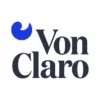Introduction to Google Sponsored Ads and ROI
When considering online advertising, understanding the cost of Google sponsored ads is crucial for maximizing return on investment (ROI). Companies of all sizes use these ads to reach potential customers worldwide, generating interest, website traffic, and revenue. However, the cost of Google sponsored ads varies depending on several factors. In this article, we will dissect the cost of Google sponsored ads, provide a comprehensive understanding of Pay-per-click Advertising, and present effective Google AdWords budget strategies to maximize your ROI.
How Google Sponsored Ads Work
Google sponsored ads operate under a dynamic pricing model that often leaves marketers questioning their actual cost. While providing a universally applicable cost estimate is challenging due to the variability inherent in Google’s pricing structure, understanding the underlying concepts can help provide a rough estimate. This understanding can also offer valuable insights on how to boost your ROI.
Google sponsored ads use a Pay-per-click (PPC) advertising model, meaning you only pay when someone clicks on your ad. The amount you pay per click (CPC) depends on several factors, such as your maximum bid, your Quality Score, and the competition for the keywords you’re bidding on. With a firm grasp of your Google AdWords budget, you can significantly aid your PPC campaigns and yield higher returns on your ad spend.

Factors Influencing the Cost of Google Sponsored Ads
Understanding the mechanisms used by Google to determine the cost of its sponsored ads can help in setting a realistic Google AdWords budget. This budget essentially represents the amount you’re willing to allocate for advertising on Google’s platforms over a predefined period. Small-to-mid-sized businesses usually spend between $9,000 and $10,000 per month on Google AdWords. However, this figure fluctuates depending on your campaign objectives, the competitiveness of your keywords, and industry-specific factors. Constructing, assessing, and updating this budget regularly can help you stay competitive in your niche and realize better-than-expected ROI.
Google considers several factors when calculating each ad’s auction rank, including bid amount, the advertisement’s Quality Score, and the expected impact of ad extensions and other ad formats. These elements play a crucial role in determining the actual cost per click and, consequently, your overall advertising expenses.
Strategies to Maximize Your ROI
To maximize your ROI from Google sponsored ads, it’s essential to consider the timing and length of your advertisement, the competitiveness of your chosen keywords, the relevancy and quality of your ad, and your geographic target market. Additionally, the engagement level your ad incites, such as the click-through rate and conversions, will heavily influence your ROI.
One effective strategy is to continuously monitor and adjust your bids based on the performance data. This allows for more efficient allocation of your budget towards the best-performing keywords and ads. Another approach is to focus on improving your Quality Score by enhancing the relevance and quality of your ads and landing pages, which can lower your CPC and improve your ad rank.

Conclusion: The Importance of Understanding Google Ad Costs
The cost of Google sponsored ads involves much more than just money. It requires a deep understanding of Pay-per-click advertising, maintaining a flexible yet disciplined Google AdWords budget, and a thorough analysis of several external factors. Investing time in gaining this knowledge can significantly impact your bottom line.
In your quest to obtain the highest possible ROI from your Google sponsored ads, it’s vital not to overlook the various elements that contribute to both the cost and the returns on your investment. Each plays a formative role and influences one another in numerous ways, ultimately determining the success of your advertising efforts.


